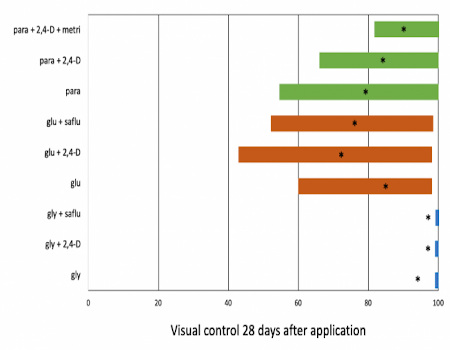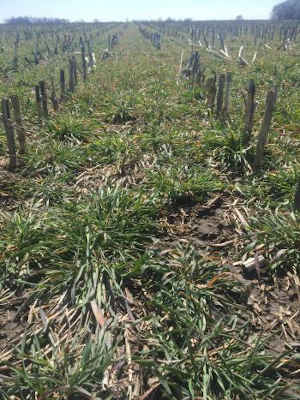By Meaghan Anderson & Rebecca Vittetoe et.al.
As temperatures warm this spring, cover crop termination is on the to-do list for some Iowa fields. Killing cover crops with herbicides is the most common termination method. The effectiveness of herbicides at terminating a cover crop depends primarily on three things:
- Cover crop species and growth stage
- Herbicide and rate used
- Environment
The cool and fluctuating temperatures encountered in spring often make terminating cover crops challenging. Farmers are limited to a few products like paraquat (Gramoxone; group 22), glufosinate (Liberty; group 10), or glyphosate (Roundup; group 9) for cover crop termination. Glyphosate is the most consistent option for termination, especially as cover crops increase in size. The group 1 herbicides (e.g. clethodim, fluazifop, etc.) do not provide effective control of cereal rye. If cereal rye or other grass species are seeded with a legume, inclusion of 2,4-D or dicamba with glyphosate will improve consistency of control. This addition can also be helpful if broadleaf winter annuals are present.
In a study encompassing eight site-years across five states, treatments containing glyphosate provided the most consistent cereal rye control (Figure 1). Cereal rye ranged from 5-54 inches tall at termination in the experiments. While control of cereal rye did not differ statistically between most paraquat and glyphosate treatments, paraquat-based treatments were much less consistent than glyphosate-based treatments. Glufosinate treatments were less effective and less consistent than glyphosate treatments. While paraquat can provide acceptable control in some situations, neither glyphosate alternative (paraquat, glufosinate) provides as consistent control as glyphosate under the cool and variable spring conditions. Dicamba combinations with the three burndown herbicides provided similar results to 2,4-D combinations (data not presented).

Figure 1. Control of cereal rye cover crops with select herbicide treatments.
* represents treatment mean; box represents the mid 50% of the data set, providing information on consistency of treatments. Herbicide rates: glyphosate: 1.0 lb/A; paraquat: 0.75 lb/A; glufosinate: 0.5 lb/A; 2,4-D: 0.5 lb/A; saflufenacil: 0.36 oz/A; metribuzin: 0.12 lb/A. Herbicides applied in 15 gal/A. Adapted from Whalen et al. 2020.

Vegetative growth in rye requires temperatures of at least 38 F. While air temperatures may be favorable some days, cool soil temperatures can slow growth. Herbicides are most effective on actively growing plants; thus, very early spring termination treatments may provide less than complete control. Leaving a small check strip is a simple and easy way to see if the cover crop is dying following termination.
Source : iastate.edu